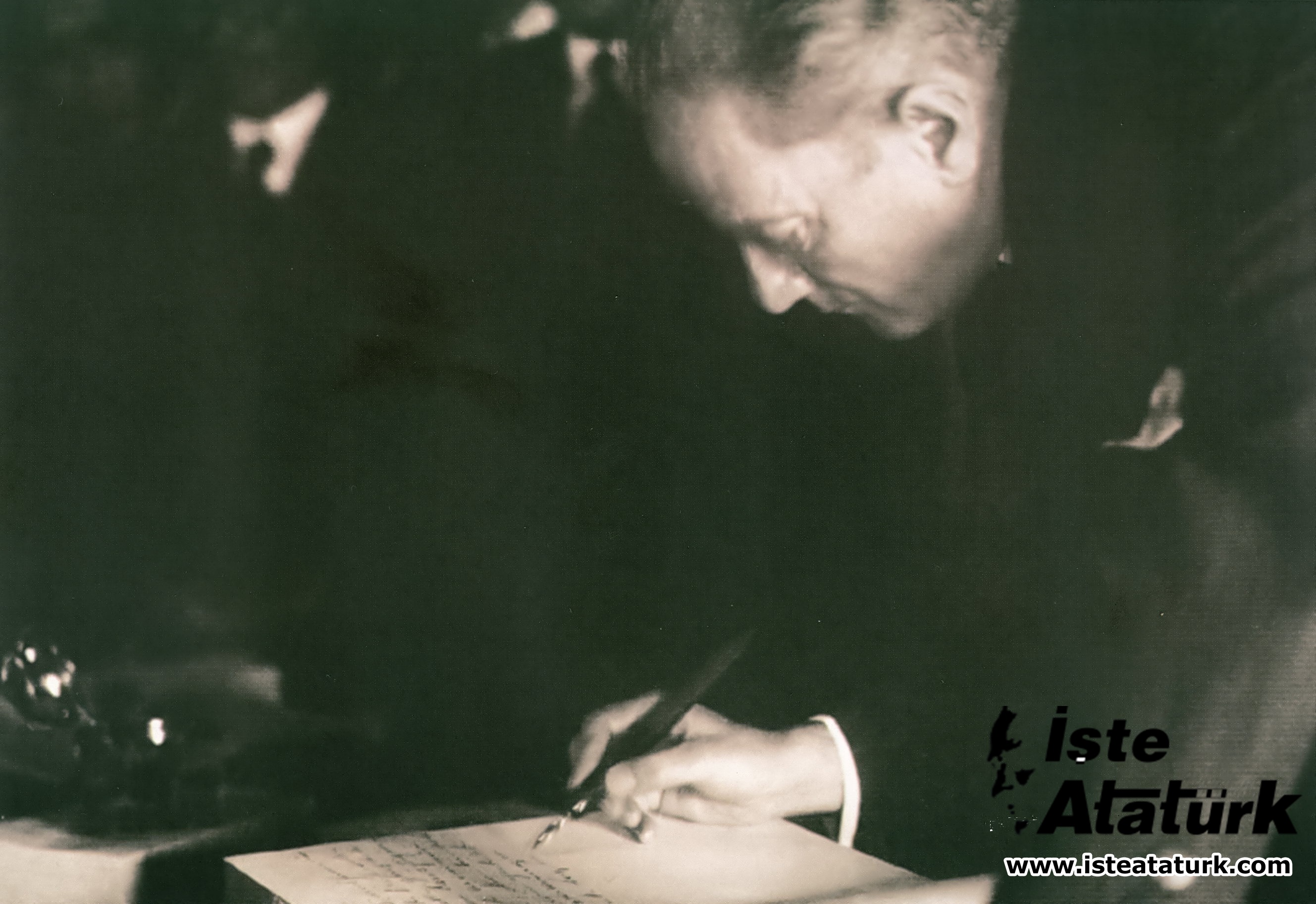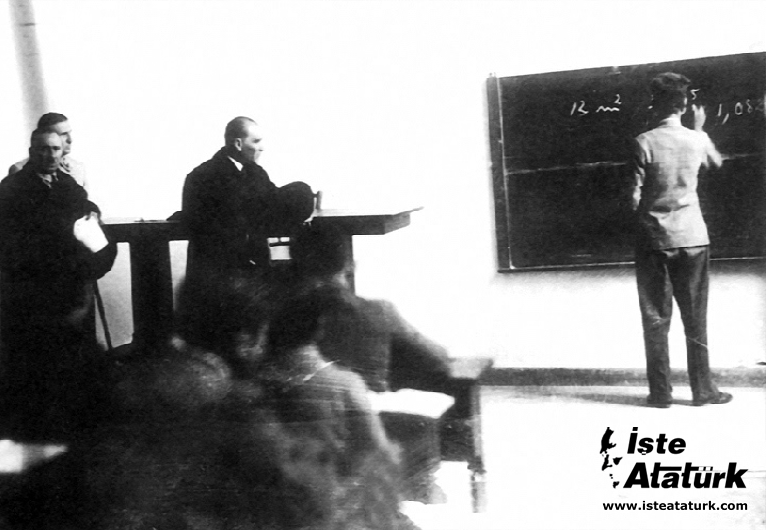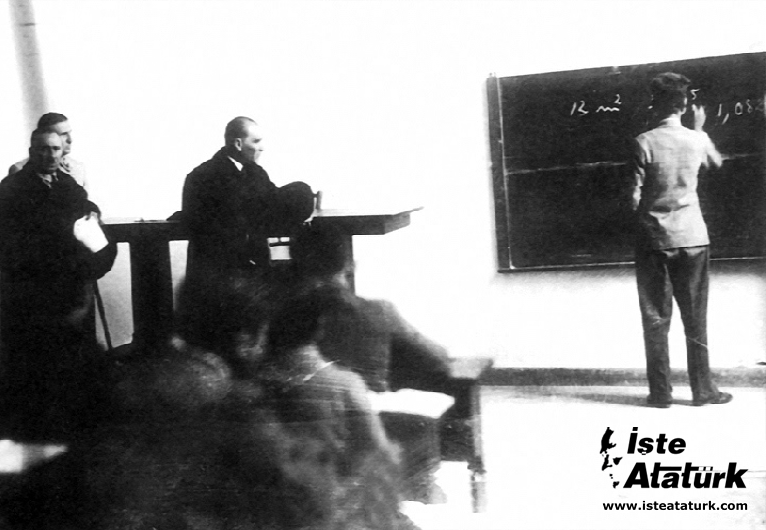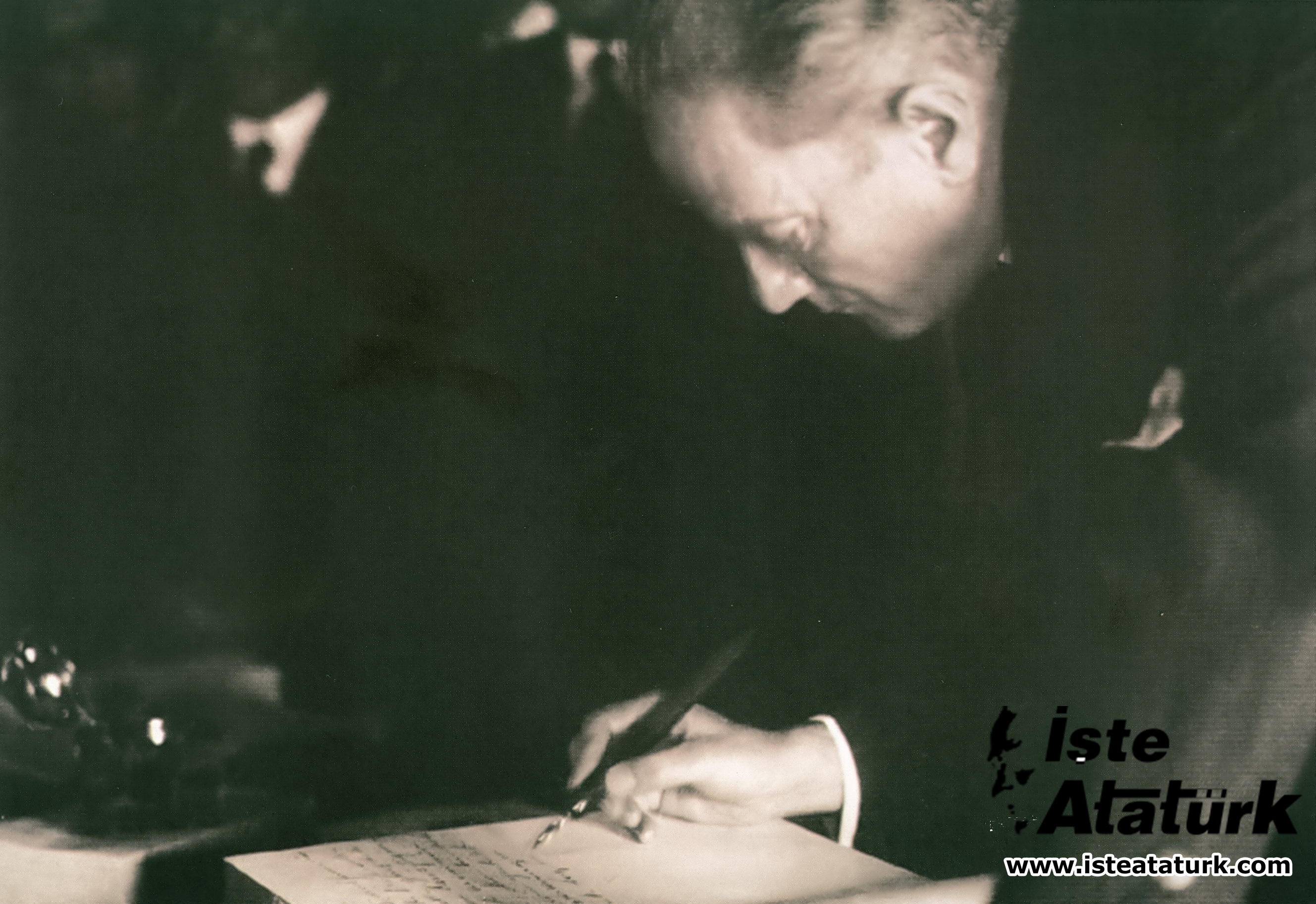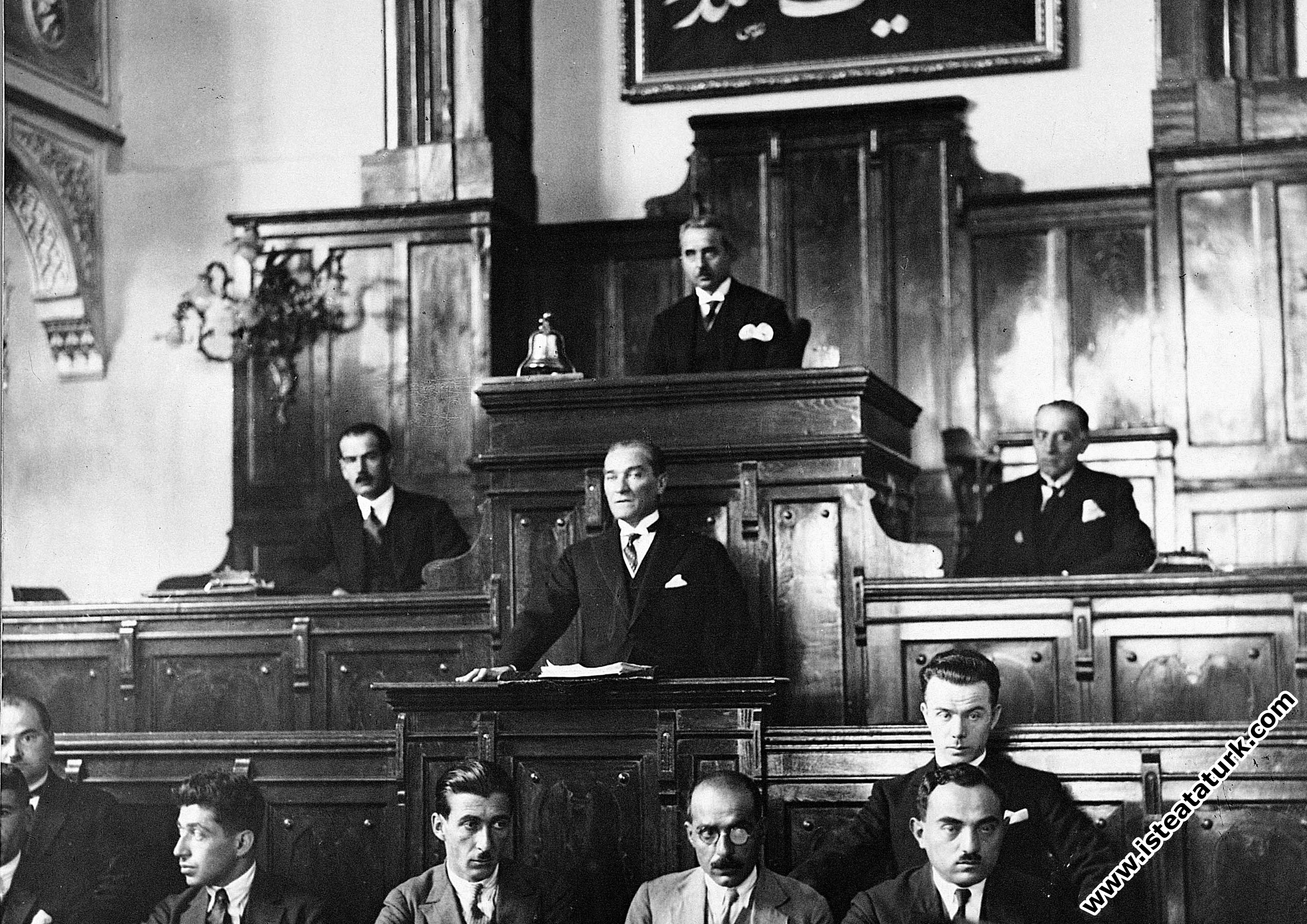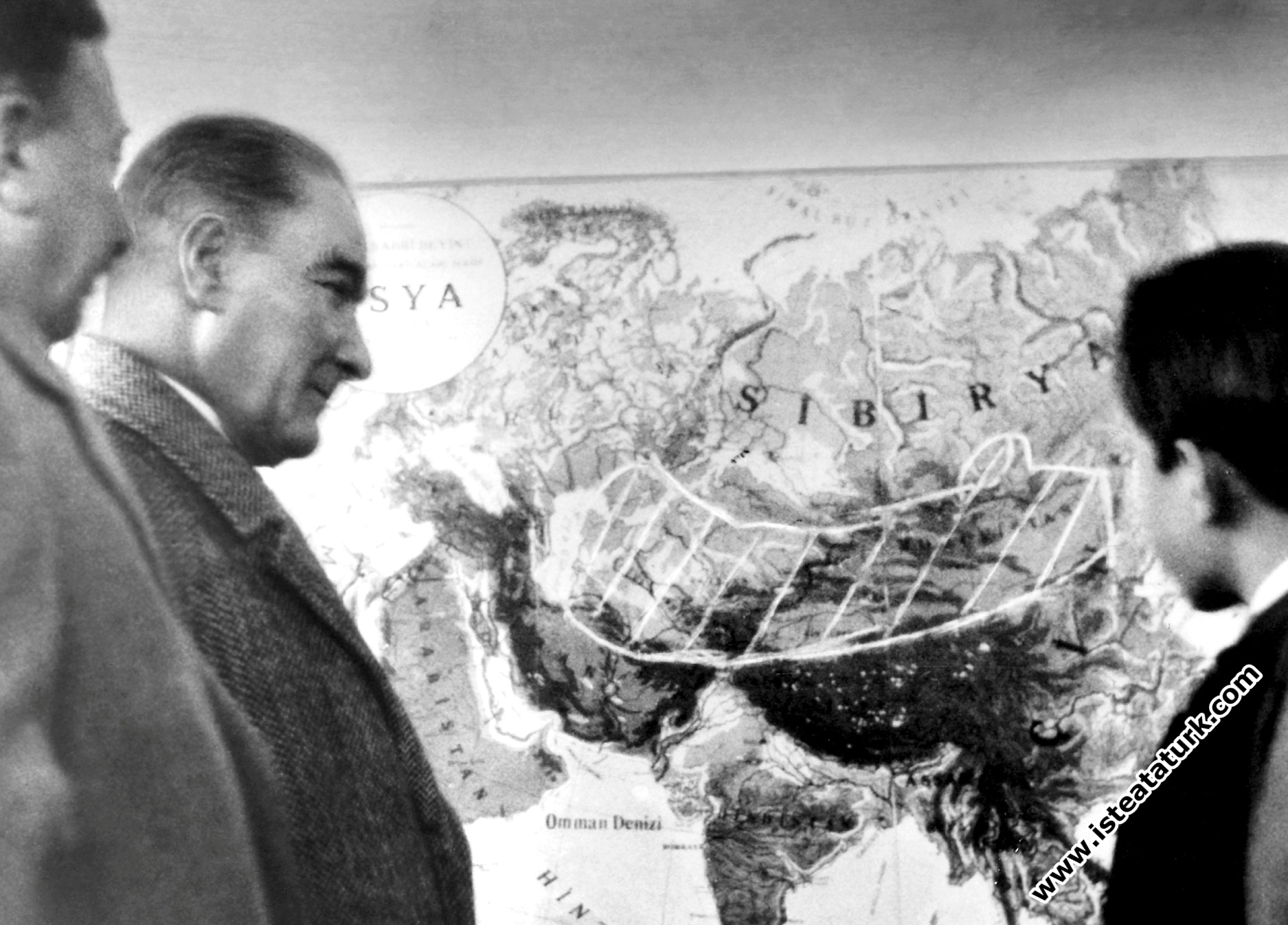
Foundation of Revolutions
Character Size
"The aim of the revolutions we have made and are making is to make the people of the Republic of Turkey a fully modern and civilized society in all its meanings and forms. This is the basic principle of our revolutions". Mustafa Kemal Ataturk
THE FOUNDATION OF REVOLUTIONS
We are of the opinion that in order to fully analyze Atatürk's revolutions, in other words, the great breakthroughs and changes in the political and social fields in our social life, we must return to the great leader and reveal his understanding of revolution. While defining the revolution, Atatürk said, “Revolution is to change the existing institutions by force, to destroy the institutions that have left the Turkish nation behind in the last century, and to replace them with institutions that will enable the nation to progress according to the highest civilizational requirements”1.
The great leader also defined the real revolutionary as follows: “Real revolutionaries are those who know the real tendency in the souls and consciences of the people they want to lead to progress and renewal”. In addition, it shows the Turkish nation as the true owner of the wonders it has shown and the political and social revolutions it has realized in recent years.
In addition to these, the most important thing is that Atatürk stated that he set “reaching the level of modern civilization” as a goal after the liberation. What we want to focus on is understanding the revolutions, stating where the great leader wants to take this country, the people of this country. “The aim of the revolutions we have made and are making is to make the people of the Republic of Turkey a fully modern and civilized society in all its meanings and forms. This is the basic principle of our revolutions”2, says Atatürk.
Since the main aim is to reach the level of contemporary civilization, first of all, it will be to determine what this level of modern civilization is.
If we go back a little, we will see some reforms in the empire and efforts to realize some western-oriented movements in the social structure of the society, at least since the reign of Selim III, during the Ottoman Empire. However, since the Ottoman intellectuals saw turning to the west, bringing the modernity level of the day to the Ottoman society, as an attack on their own cultural heritage, innovation could only be in the military field. However, even the innovation in this field has always been left on the side with oppositions and rebellions in various periods. Since Mahmut II was a more determined sultan, he had the opportunity to renew, it would be more correct to call it some changes. With the schools opened in the field of education, with some specializations in the field of management, He gave examples of this with the structuring he started in the field of public works and the new institutions he established in the field of law. Since modernization was considered more in the sense of westernization in those days, it is possible to say that the period of Mahmut II was the beginning of the "Tanzimat" period, in which this concept would be put forward more clearly.
Tanzimat is undoubtedly an effort to bring innovations in certain areas. Concepts such as the dignity of being human and the idea that a person is free, security and the right to property, which spread in the Continental Europe with the French Revolution of 1789, were announced to the Ottoman society with a document, even from the sidelines. The life and property of the Ottomans would be protected, and their chastity and honor would be secured. To say that it remained only on paper for many years does not mean to belittle this document. Because Abdülmecit felt the need to announce that what was put forward in his 1839 edict should be carried out with an edict issued in 1856.
However, Tanzimat kept some important institutions alive and enabled them to settle. This modernization could not be counted, of course, but even the fact that the West had some institutions caused some of its thoughts to settle. The First Constitutional Monarchy can be described as a concrete image of this idea in the social field. The preparation of the constitution and the opening of the parliament took place as a result of the efforts of a small intellectual circle rather than a pressure from the grassroots and the desire of a large part of the society. But the parliament, the most important of the western institutions, was opening for the first time in an Islamic country. Although the already existing powers of the sultan are now legalized with the Constitution, there was at least a section that talked about the basic rights and freedoms of the Ottoman citizen. Even though the structure and content of the constitution were discussed from every angle, a beginning had been made. So what,
It can be said that the Second Constitutional Monarchy brought important principles on paper with the amendments made in the Constitution. However, his implementation did not last, the Tripoli War, the Balkan War that followed, and finally the First World War brought the end of the Ottoman society's aspirations towards the west.
A great leader, whose country was occupied after a great war, was under the pressure of his rulers for years, and finally liberated the people of a country they were burning with the desire to share with foreign states, he founded the new republic, while the smoke of the cities burned by the fleeing enemy had not gone out, he kept the people of this society fully modern. and it is in the struggle to make it a civilized society.
What will be the means of reaching the level of contemporary civilization in the war to be waged with this unprecedented extraordinary effort?
The first of these is “economic development”. According to Atatürk, economic development will not be for the benefit of certain classes and groups, but within the liberal order, it will be for the whole people. While stating that there are no classes with conflicting interests in Turkey, as in the West, and that development should be a development that enriches all classes together, he wanted to gather all the people in a single party as a “unprivileged, fused mass”3.
As a result of the same understanding, when journalists asked him which class the party would be based on, at the press conference he held in Izmit, Atatürk said, “Which class says, we are all just the people. I will name my party the People's Party, “4.
As can be seen, the concept of populism was both a tool against class struggle and a theory of secular sovereignty, which opposed and replaced the Islamic theory of sovereignty5. Another means of reaching the level of contemporary civilization by passing such a populist understanding is "science and science". According to him, modern civilization is based on “science and science”.
“The nation”, says Atatürk, “will find science and tools that can find life and strength only in contemporary civilization in its effort to be successful in the international arena”. As can be understood from these words, modern civilization is based on science, which is the cause of life and strength. As a matter of fact, “Science is the most real guide for everything in the world, for civilization, for life, for success” - The most genuine guide is science6.
That is, a formation that passes through the understanding of populism will reach the level of contemporary civilization through science and science. As we said above, economic development, which is the other tool of such a development, will be entirely for the people. We have seen that Atatürk himself declared that a classless society was aimed with the words of the people. The form of society to be passed through in order to reach the desired society will be based on the democratic system in the West and will depend on the liberalism at its core. However, Mustafa Kemal did not propose a mere western imitation or copying with the word of modern civilization. The great leader explains this view as follows: “There are those who think very well among our intellectuals. However, we usually have the following error that we often base our research and investigations on our own country, our own history, our own traditions,
“Our intellectuals say let's make our nation the happiest nation. He says let's do it exactly as other nations have done. However, we must consider that such an idea has never been successful. What is happiness for one nation may be disastrous for another. The same reasons and conditions can make one happy, but make the other unhappy. That's why, while showing this nation the way to go, let's benefit from all kinds of science, discoveries and developments in the world. But let's not forget that we have to extract the real foundation from within ourselves”7. In our opinion, the following words of Gazi are clear, specific and meaningful enough to not require much explanation or interpretation. It advises to benefit not only from the science of the environment created by the western civilization, but from the science all over the world, while doing this, the basic values of our country, It accepts as a necessary condition that we should not ignore the understanding of culture and the values unique to us accumulated by historical accumulation. In this case, the scientific universe of the modern world should not be a model that we will accept without changing it, but should be accepted as a method for evaluating the conditions of our own country.
Otherwise, it's easy not to make the mistake that Atatürk showed... A close friend of Atatürk explains this view in a slightly different way, but in a similar sense: “What is Atatürkism? Establishing a free western Turkishness on the basis of legalism and unity of education, which conducts the affairs of society only through reason and according to changing needs and conditions”8.
If we need to sum up the views of Mustafa Kemal Atatürk, starting from his understanding of revolution, we think that it would be possible to see what kind of thought system he took while creating the new Turkey, and which understanding he took action, albeit with thick lines. Indeed, from the very first years of struggle, Atatürk always acted within a consistent system within himself. An elected Supreme Assembly, a council of ministers coming out of this assembly and a president, - thus the political structure of the regime: the Republic is determined - as the basis of this political structure, a secular state understanding and all its efforts will work for the benefit of the people (regardless of class, group) a power mechanism. So much so that when all the forces of the nation marched in the same direction, With the help of science and science, the level of modern civilization can be reached, but while this is being done, there is no separation between the intellectuals and the people; identity and cohesion will be ensured, so that national values and culture will never be overlooked. In this case, not the copying of the West, but the experiments and scientific methods obtained from the stages it went through in reaching civilization will be discussed and examined in terms of our conditions. These were the cornerstones of the world that Mustafa Kemal set up in his mind while establishing a new state.
1 F.Naci, Atatürk's Basic Views, Real publications, Istanbul 1968, p. It is quoted from Afet Inan in 43.
2 Atatürk's Speeches and Statements, TlTE broadcast, 1, Ankara 1952, p. 217.
3 Taner Timur, Turkish Revolution and Aftermath 1919-1946-1971, p. 138.
4 Falih Rıfkı Atay, What is Kemalism?, 1966, p. 11th.
5 Taner Timur, supra, p. 138.
6 Atatürk's Speeches and Statements, p. 197-240.
7 Ages 141.
8 Falih Rıfkı Atay, supra, p. 55.
Prof. Dr. İlhan F. Akın
Kaynak: ATATÜRK ARAŞTIRMA MERKEZİ DERGİSİ, Sayı 20, Cilt: VII, Mart 1991
